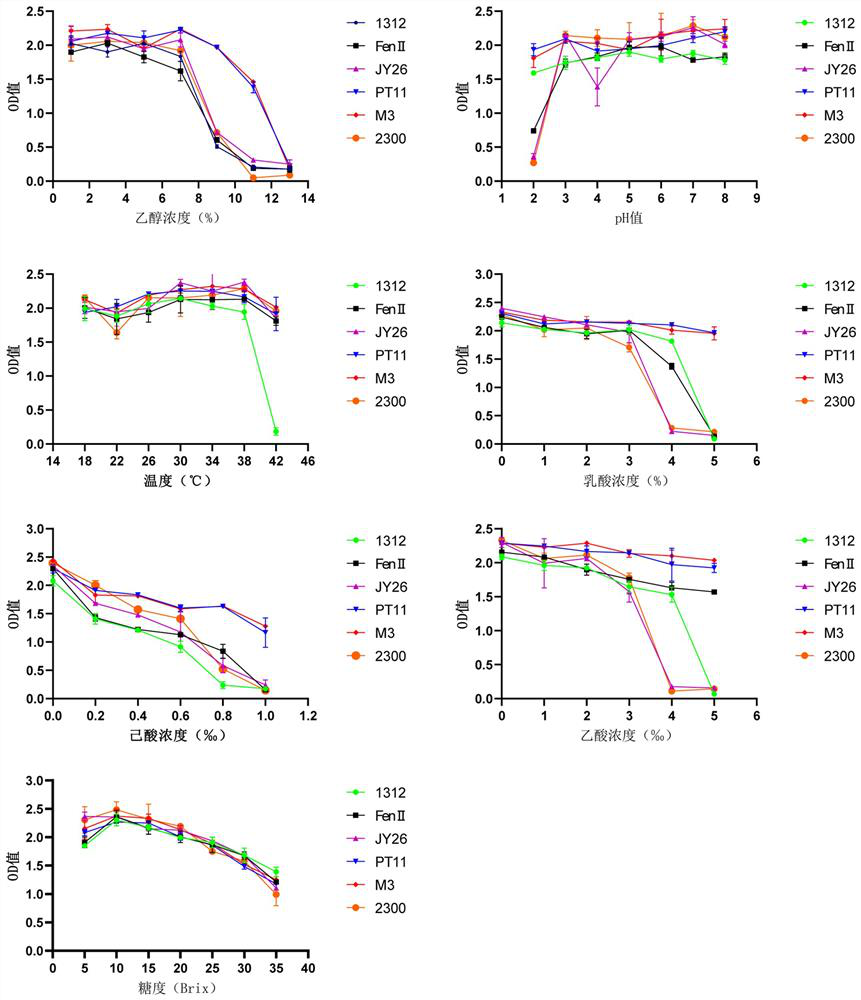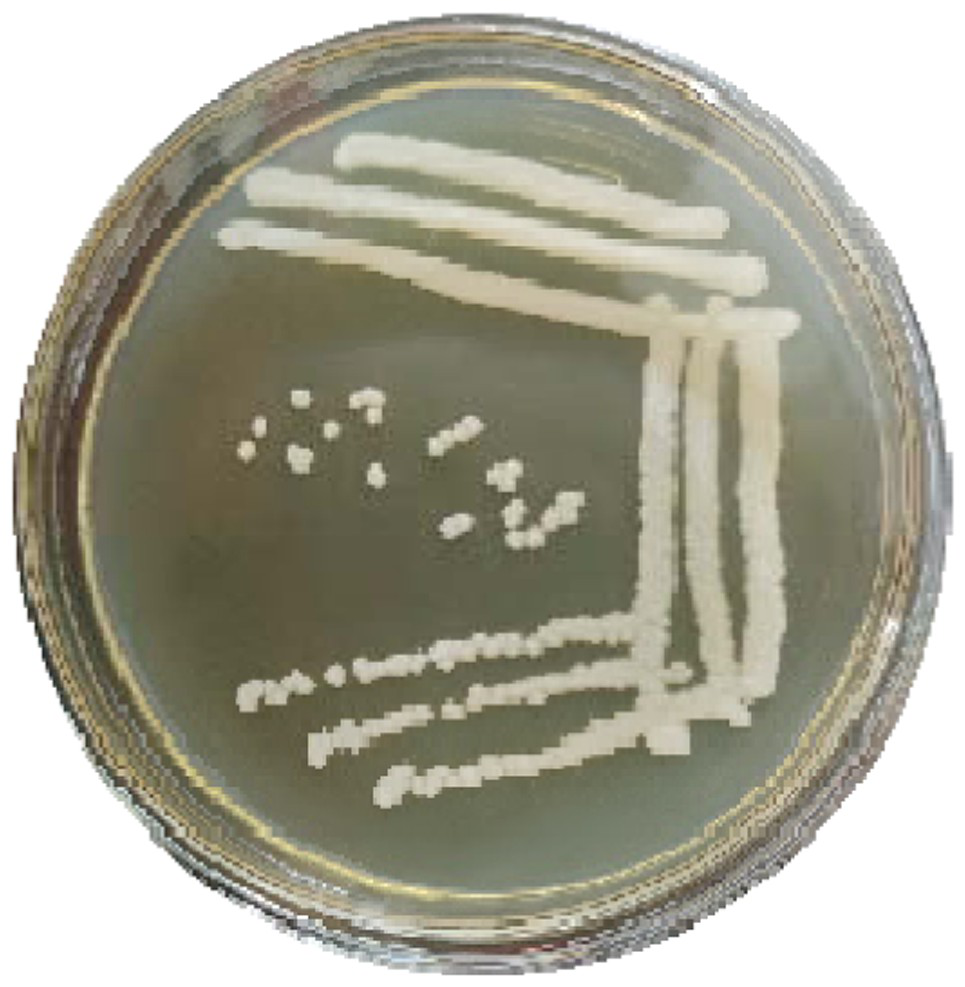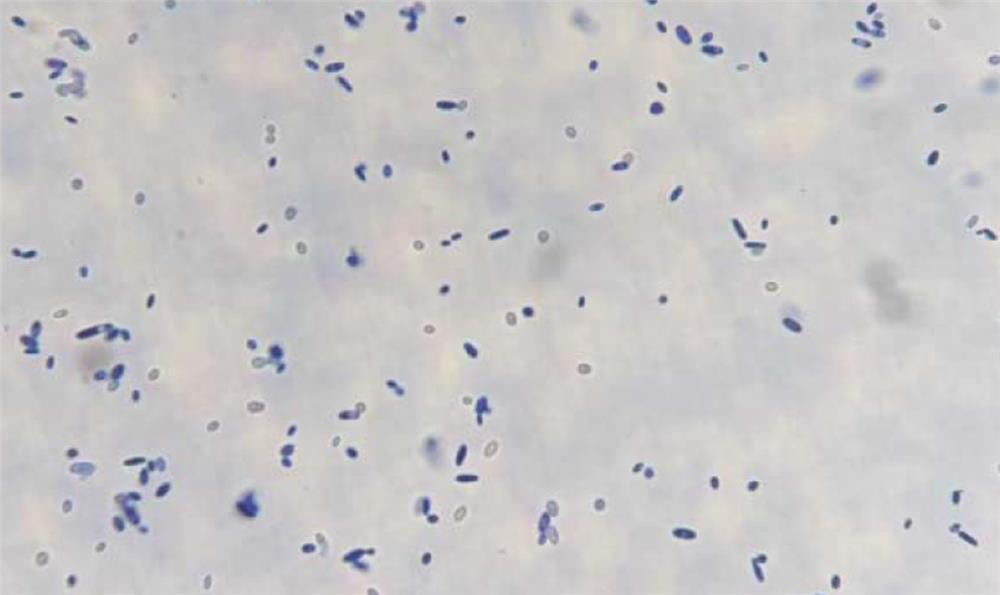Pichia kudriavzevii with high tolerance and low isoamyl alcohol yield and application of pichia kudriavzevii
A technology of Pichia pastoris and isoamyl alcohol, applied in the field of brewing microorganisms, can solve problems such as unpleasantness, and achieve the effects of improving wine quality, unique high-yield ethanol and low-yield fusel oil, and excellent physiological tolerance
- Summary
- Abstract
- Description
- Claims
- Application Information
AI Technical Summary
Problems solved by technology
Method used
Image
Examples
Embodiment 1
[0023] Screening of strains
[0024] The Pichia pastoris with high ethanol yield and low fusel oil yield involved in the present invention is isolated and screened from high-quality fermented grains, and the specific screening method is as follows:
[0025] First, more than 60 yeast strains with excellent performance were screened out of high-quality fermented grains, and directional screening was carried out for ethanol-producing and low-yielding fusel oil. , prepare multiple plates in advance, and then inoculate all strains on the plate for two days at 30°C, pour the TTC medium cooled to 45°C into the upper layer of the yeast extract peptone dextrose medium (YEPD) plate and store it in the dark for two days. Observe the color change after an hour, and select the strain with darker red as the alternative strain (specifically numbered as Shao, Fen II, PD1, PT11, PT17, Y-3, JY26, PF4, M3, M4, 4-16, 2300, 1312 , 10#). Then the alternative strain was placed in yeast extract pep...
Embodiment 2
[0030] Example 2: Physiological characteristics of Pichia pastoris with high ethanol production and low fusel oil production:
[0031] Scrape FenⅡ, PT11, JY26, 2300, 1312, M3 from a ring of slants to liquid yeast extract peptone glucose medium (YEPD) at 30°C, 180r / min for 16h, and then inoculate YEPD liquid according to 2% of the inoculum The medium was cultured at 30°C at 180r / min for 24h, and the OD600 was used as an indicator to detect the ethanol concentration of the strain at 1%, 3%, 5%, 7%, 9%, 11%, 13%; pH value is 2, 3, 4, 5, 6, 7, 8; Brix value is 5Brix, 10Brix, 15Brix, 20Brix, 25Brix, 30Brix, 35Brix; culture temperature is 18°C, 22°C, 26°C, 30°C, 34°C ℃, 38℃, 42℃; lactic acid concentration: 0%, 1%, 2%, 3%, 4%, 5%, caproic acid concentration: 0‰, 0.2‰, 0.4‰, 0.6‰, 0.8‰, 1.0‰; the acetic acid concentration is: tolerance under the conditions of 0‰, 1‰, 2‰, 3‰, 4‰, 5‰, and the results are shown in the appendix figure 1 . It can be seen that the M3 strain has the best ...
Embodiment 3
[0036] Example 3: Molecular biological identification of M3 strain
[0037]The strains obtained by screening were sent to Huada Gene Technology Co., Ltd. for 18S rRNA gene sequencing. The sequencing results were placed in the NCBI (National Center for Biotechnology Information) database for comparison, and the strain sequences with higher similarity were selected and used in MEGA 11.0 software. Maximum likelihood method (Maximum Likelihood Estimation, MLE) to construct phylogenetic tree as attached Figure 4 shown.
PUM
 Login to View More
Login to View More Abstract
Description
Claims
Application Information
 Login to View More
Login to View More - R&D
- Intellectual Property
- Life Sciences
- Materials
- Tech Scout
- Unparalleled Data Quality
- Higher Quality Content
- 60% Fewer Hallucinations
Browse by: Latest US Patents, China's latest patents, Technical Efficacy Thesaurus, Application Domain, Technology Topic, Popular Technical Reports.
© 2025 PatSnap. All rights reserved.Legal|Privacy policy|Modern Slavery Act Transparency Statement|Sitemap|About US| Contact US: help@patsnap.com



